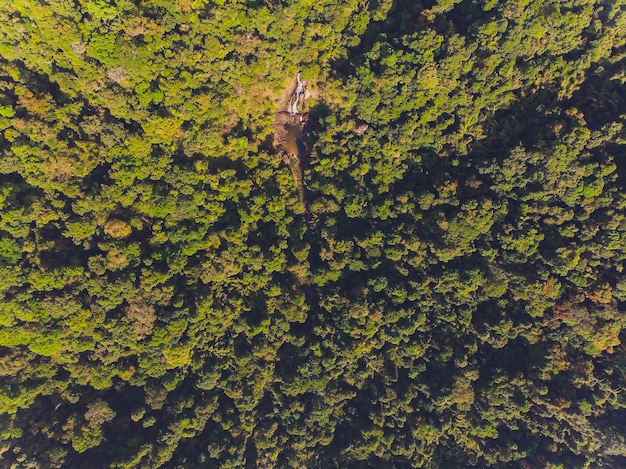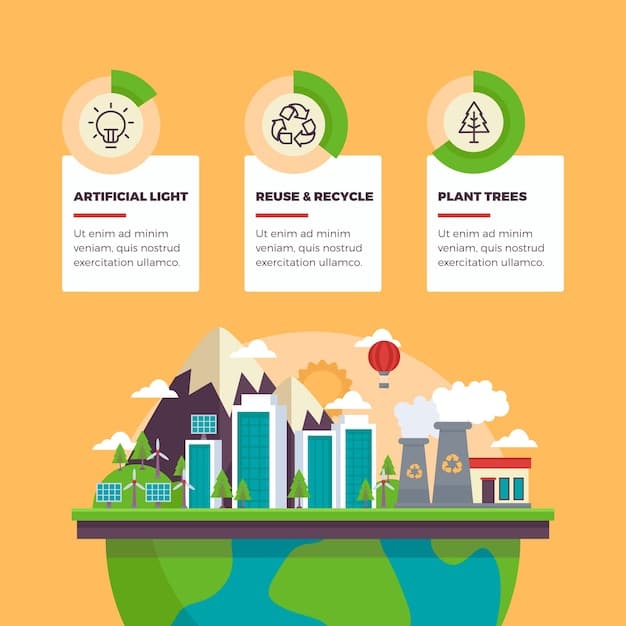Peru’s Environmental Policies: Implications for US Companies

Understanding the Implications of Peru’s New Environmental Policies for US Companies is crucial for US businesses operating or planning to invest in Peru, as these policies can significantly impact their operations, compliance costs, and long-term sustainability strategies.
Navigating the evolving landscape of environmental regulations in Peru is becoming increasingly important for US companies. Understanding the Implications of Peru’s New Environmental Policies for US Companies is no longer optional; it’s a strategic imperative for sustainable growth and compliance.
Peru’s Shifting Environmental Landscape
Peru, rich in biodiversity and natural resources, is undergoing a significant shift in its approach to environmental protection. These changes are not just internal matters; they have direct and considerable effects on foreign investors, particularly US companies operating within its borders.
The evolving regulations aim to balance economic growth with sustainable practices, requiring US companies to adapt their strategies to align with Peru’s new environmental priorities.
Key Environmental Regulations in Peru
Several key pieces of legislation form the backbone of Peru’s environmental policy. These laws cover diverse areas, from pollution control to natural resource management.
US companies need to be aware of these regulations to ensure compliance and avoid potential legal issues.
- General Environmental Law (Law No. 28611): Establishes the general framework for environmental management in Peru, setting principles and guidelines for environmental protection.
- Environmental Impact Assessment System (SEIA): Requires companies to conduct environmental impact assessments (EIAs) for projects that could have significant environmental impacts.
- Law on Conservation and Sustainable Use of Biological Diversity (Law No. 26839): Focuses on preserving Peru’s rich biodiversity and promoting the sustainable use of its natural resources.
- Water Resources Law (Law No. 29338): Regulates the use and management of water resources, ensuring their sustainable exploitation and protection.
Understanding these regulations is only the first step. US companies must also stay updated on any amendments or new policies introduced by the Peruvian government.
Impact on Key Sectors
Peru’s new environmental policies have varying degrees of impact across different sectors. Some industries face more stringent regulations than others, requiring tailored compliance strategies.
It’s essential for US companies to understand the specific implications for their sector and adapt their operations accordingly.

Mining
The mining sector in Peru is heavily scrutinized, with stricter regulations on water usage, waste management, and environmental remediation. US mining companies must invest in advanced technologies and sustainable practices to comply.
Failure to adhere to these regulations can result in significant penalties and reputational damage.
Agriculture
New policies promote sustainable farming practices, encouraging the reduction of chemical use and the adoption of environmentally friendly techniques. US agricultural companies need to adapt their farming methods to align with these standards.
Compliance not only reduces environmental impact but also enhances the long-term sustainability of agricultural operations.
Energy
The energy sector faces increasing pressure to transition towards renewable sources and reduce carbon emissions. US energy companies must invest in clean energy technologies and implement strategies to minimize their environmental footprint.
This includes adhering to strict regulations on emissions and waste disposal.
By understanding these sector-specific impacts, US companies can prepare proactive strategies to navigate the changing regulatory environment effectively.
Compliance Challenges and Strategies
Navigating Peru’s new environmental policies presents several compliance challenges for US companies. Overcoming these obstacles requires a strategic approach and a commitment to sustainability.
Effective compliance strategies can mitigate risks and enhance long-term business value.
Understanding Local Regulations
One of the primary challenges is understanding the intricacies of Peruvian environmental law. Regulations can be complex and may require specialized expertise to interpret correctly.
Engaging with local legal experts is crucial for ensuring compliance.
Investing in Sustainable Technologies
Adopting sustainable technologies is essential for meeting the requirements of new environmental policies. This may involve investing in cleaner production processes, waste reduction technologies, and renewable energy sources.
These investments not only ensure compliance but can also lead to cost savings and improved efficiency.
Stakeholder Engagement
Engaging with local communities and stakeholders is crucial for building trust and ensuring the social license to operate. This involves open communication, transparency, and a commitment to addressing community concerns.
Effective stakeholder engagement can help mitigate conflicts and foster positive relationships.

By proactively addressing these compliance challenges, US companies can demonstrate their commitment to environmental stewardship and build a strong reputation in Peru.
Opportunities for Sustainable Investment
While Peru’s new environmental policies pose compliance challenges, they also create significant opportunities for sustainable investment. US companies can leverage their expertise and technology to contribute to Peru’s green economy.
Sustainable investments can drive innovation, create new markets, and enhance long-term competitiveness.
Renewable Energy Projects
Peru’s growing demand for renewable energy creates opportunities for US companies specializing in solar, wind, and hydropower technologies. Investing in these projects can help Peru reduce its carbon footprint and diversify its energy mix.
The government’s commitment to renewable energy provides a stable and supportive environment for investors.
Sustainable Agriculture Initiatives
Opportunities exist for US companies to support sustainable agriculture initiatives that promote environmentally friendly farming practices. This includes investing in organic farming, soil conservation, and water management technologies.
These initiatives can enhance food security, improve livelihoods, and protect the environment.
Environmental Remediation Services
Peru’s legacy of mining and industrial activity has created a need for environmental remediation services. US companies with expertise in this area can play a crucial role in cleaning up contaminated sites and restoring ecosystems.
These services are essential for protecting public health and preserving natural resources.
By seizing these opportunities, US companies can contribute to Peru’s sustainable development goals while generating attractive returns on their investments.
Case Studies: US Companies Adapting to Peru’s Green Policies
Several US companies have successfully adapted to Peru’s new environmental policies, demonstrating that compliance and sustainability can go hand in hand. These case studies provide valuable insights and best practices for other businesses.
Learning from these examples can help US companies navigate the regulatory landscape more effectively.
Case Study 1: A Mining Company’s Water Management Strategy
A US mining company operating in Peru implemented an innovative water management strategy to reduce its water consumption and minimize its impact on local water resources. This involved investing in water recycling technologies, implementing water conservation measures, and engaging with local communities to address their concerns.
The company’s efforts not only reduced its environmental footprint but also improved its relationships with stakeholders and enhanced its reputation.
Case Study 2: An Agricultural Firm’s Sustainable Farming Practices
A US agricultural firm adopted sustainable farming practices to reduce its reliance on chemical fertilizers and pesticides. This involved implementing crop rotation techniques, using organic fertilizers, and adopting integrated pest management strategies.
The firm’s efforts resulted in improved soil health, reduced environmental pollution, and higher yields.
Case Study 3: An Energy Company’s Renewable Energy Investments
A US energy company invested in renewable energy projects, including solar and wind farms, to diversify its energy portfolio and reduce its carbon emissions. This involved partnering with local communities to develop and operate these projects.
The company’s investments contributed to Peru’s energy security and helped it meet its climate change goals.
These case studies illustrate that US companies can successfully adapt to Peru’s new environmental policies by embracing innovation, sustainability, and stakeholder engagement.
The Future of US-Peru Environmental Cooperation
The future of US-Peru environmental cooperation looks promising, with opportunities for collaboration on various initiatives. Enhanced cooperation can drive innovation, promote sustainable development, and address shared environmental challenges.
Strengthening ties between the two countries can lead to mutual benefits and a more sustainable future.
Joint Research and Development
Opportunities exist for joint research and development projects focused on environmental technologies and sustainable practices. This could involve collaboration between universities, research institutions, and private companies.
These projects can drive innovation and create new solutions to environmental challenges.
Capacity Building Initiatives
US companies can contribute to capacity building initiatives that help Peruvian businesses and communities adopt sustainable practices. This could involve providing training, technical assistance, and technology transfer.
These initiatives can empower local stakeholders and promote long-term sustainability.
Policy Dialogue and Exchange
Ongoing policy dialogue and exchange between US and Peruvian policymakers can help align environmental regulations and promote best practices. This could involve sharing information, conducting joint assessments, and developing common standards.
These dialogues can foster a more consistent and transparent regulatory environment.
By embracing these opportunities for cooperation, the US and Peru can achieve greater environmental sustainability and strengthen their economic partnership.
| Key Point | Brief Description |
|---|---|
| 🌿 New Regulations | Peru’s environmental policies impact mining, agriculture, and energy sectors. |
| 💰 Compliance Costs | US firms face challenges understanding and meeting local environmental laws. |
| 📈 Investment Opps | Sustainable projects offer growth in renewable energy and remediation services. |
| 🤝 US-Peru Coop | Collaboration on research and policy enhances sustainability efforts. |
FAQ
▼
Key regulations include the General Environmental Law, Environmental Impact Assessment System (SEIA), and laws on biodiversity and water resources. These govern environmental management and sustainable resource use.
▼
US mining companies face tighter regulations on water usage, waste management, and environmental restoration. Compliance requires investment in advanced, sustainable technologies and practices.
▼
Opportunities include renewable energy projects, sustainable agriculture initiatives, and environmental remediation services. These sectors require expertise and offer potential for economic growth.
▼
By engaging legal experts, investing in sustainable technologies, and communicating transparently with local stakeholders. Compliance reduces risks and enhances long-term sustainability.
▼
Cooperation promotes sustainable development through joint research, capacity building, and aligned policies. Stronger ties lead to mutual benefits and a more sustainable future.
Conclusion
Understanding the Implications of Peru’s New Environmental Policies for US Companies is vital for navigating Peru’s evolving regulatory landscape. By embracing sustainability, fostering collaboration, and adhering to compliance standards, US companies can achieve long-term success while contributing to Peru’s green economy and environmental preservation.





